自动泊车系统(Automated Parking System或Automated Parking Assistant,简称APS或APA)可以通过车辆周身搭载的传感器测量车身与周围环境之间的距离和角度,收集传感器数据计算出操作流程,同时自动调整方向盘、刹车和油门实现停车入位。自动泊车系统按技术等级,又可分为半自动泊车(只有自动转向)、全自动泊车(含自动转向和自动前进后退)、自主代客泊车(AVP)等。
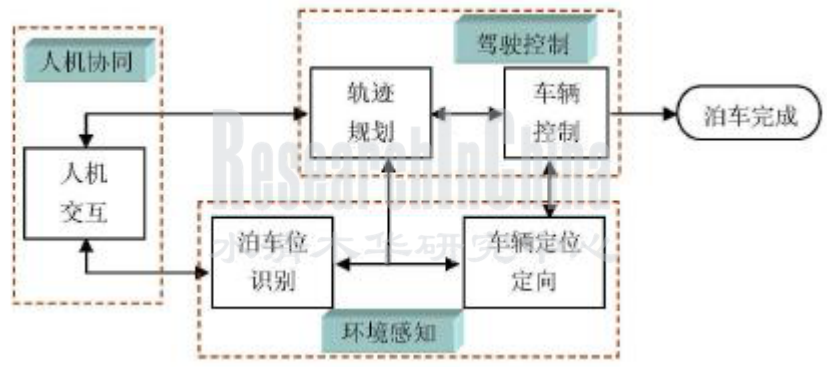
自动泊车系统通常由环境感知系统、中央控制系统(轨迹规划系统)、执行系统(车辆控制系统)组成。根据各种自动泊车系统的差异,佐思产研在近日推出的《2018-2019自动泊车与自主泊车行业研究报告》中,将所有自动泊车系统分为APL1,APL1.5,APL2,……到APL6共九个等级,各自特征如下表所示:
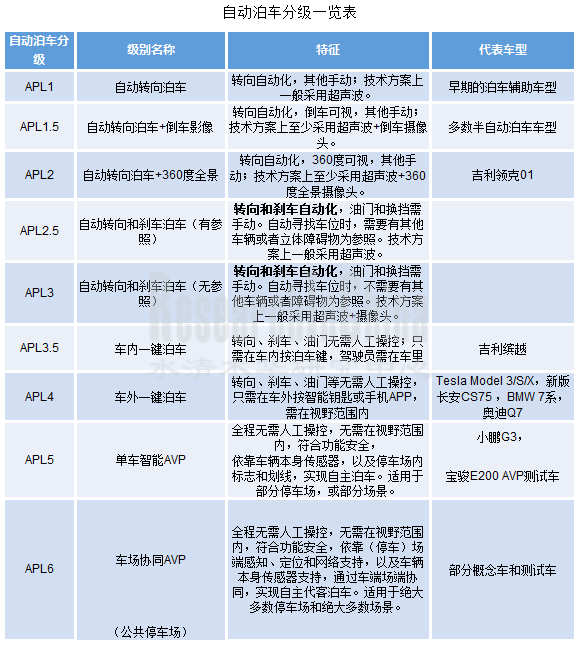
根据佐思产研数据中心的统计,中国乘用车市场自动泊车功能装配率在2018年达到5.3%。装配率不高的原因,是技术上还不够成熟。目前自动泊车功能的不成熟主要表现在:
 已经量产APS的车型中,实际体验表明自动泊车系统还不完美,还会出现系统识别错误,容易出现刮蹭等问题
已经量产APS的车型中,实际体验表明自动泊车系统还不完美,还会出现系统识别错误,容易出现刮蹭等问题
 大多数APS采用超声波传感器来监测停车位,超声波传感器的物理特性容易受到表面污损、雨滴、冰雪等影响,使传感器不能完全其功能
大多数APS采用超声波传感器来监测停车位,超声波传感器的物理特性容易受到表面污损、雨滴、冰雪等影响,使传感器不能完全其功能
 停车位识别和自动泊车过程会收到环境因素影响,如当前量产APS系统一般不能识别井盖、凹陷或松散的路肩、泊车位上较小的物体等
停车位识别和自动泊车过程会收到环境因素影响,如当前量产APS系统一般不能识别井盖、凹陷或松散的路肩、泊车位上较小的物体等
当前装配APS功能且销量较多的车型主要来自奔驰、别克、大众、宝马、路虎等国外品牌,以及国产高端品牌领克和长城WEY等。
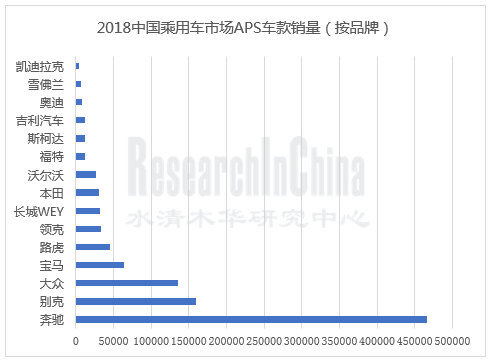
随着汽车智能化技术,特别是传感器技术的快速发展,主机厂开始在自动泊车系统中应用更多传感器,使得APS技术逐步成熟起来。自动泊车开始成为新车的重要卖点。
吉利缤越是2018中国市场最成功的五大新车之一,2018年10月31日上市,上市首月销量即破万辆。2018年11月销量1.01万辆,12月13222辆,2019年1月14627辆。缤越配备全自动泊车系统,可一键实现水平泊入、垂直泊入和水平泊出功能,整个过程中驾驶员均无需控制方向盘、油门及刹车。缤越自动泊车级别为APL3.5。
长安汽车主力车型CS75的APA4.0泊车系统,可以实现人站在车外一键泊车。只需点击自动泊车按钮,车辆即可自动搜索车尾,自动完成前进、后退、转动方向盘等操作。整个过程无需驾驶员介入。CS75自动泊车级别为APL4。
北汽计划从2019年下半年开始,将实现大部分车型搭载自动泊车技术。
新兴造车企业中,小鹏汽车主打自动泊车。小鹏G3配备20个环境传感器,包括12个超声波传感器,5个视觉传感器和3个毫米波雷达。针对大多数泊车系统车位识别率低和泊车成功率低的痛点,小鹏汽车利用数量众多的传感器系统,大幅提升车位识别率和泊车成功率,丰富自动泊车功能。据小鹏汽车介绍:普通车自动泊车成功率不到5%,特斯拉是13%,小鹏汽车超过70%。
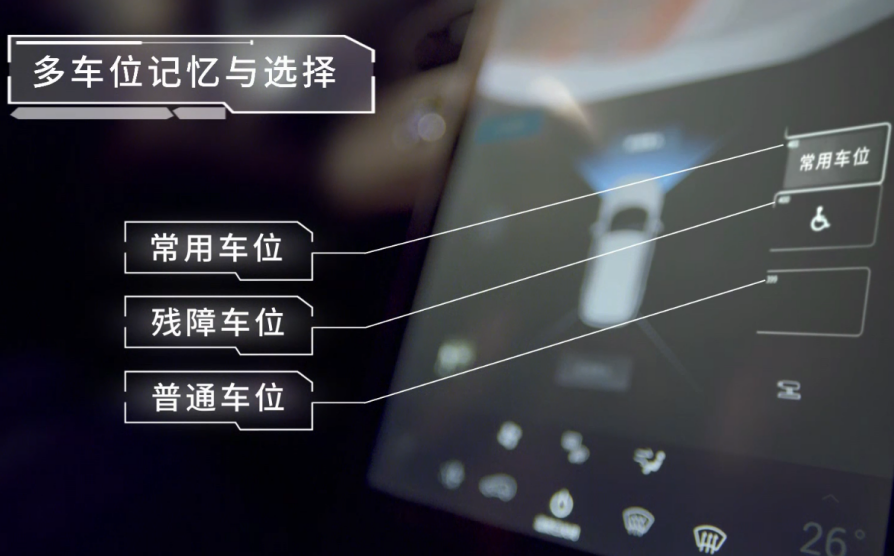
本图来源:小鹏汽车
随着自动泊车技术的逐步成熟,和各主机厂加大对APS系统的投入,自动泊车装配率将在多年的缓慢爬坡后,将从2020年起实现快速增长,预计在2023年将超过20%。
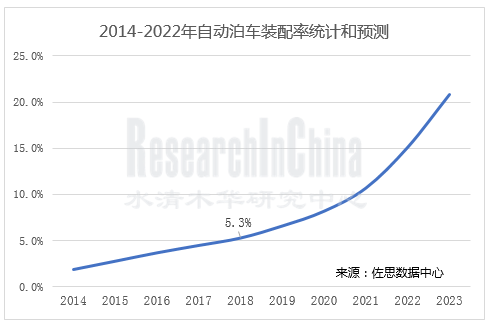
除了传统车厂在ToC市场走逐步升级的自动泊车技术路线,Tier1、科技企业和初创企业等已经在ToB市场尝试一步到位的AVP(自主代客泊车)项目试点。
本图来源:甲子光年
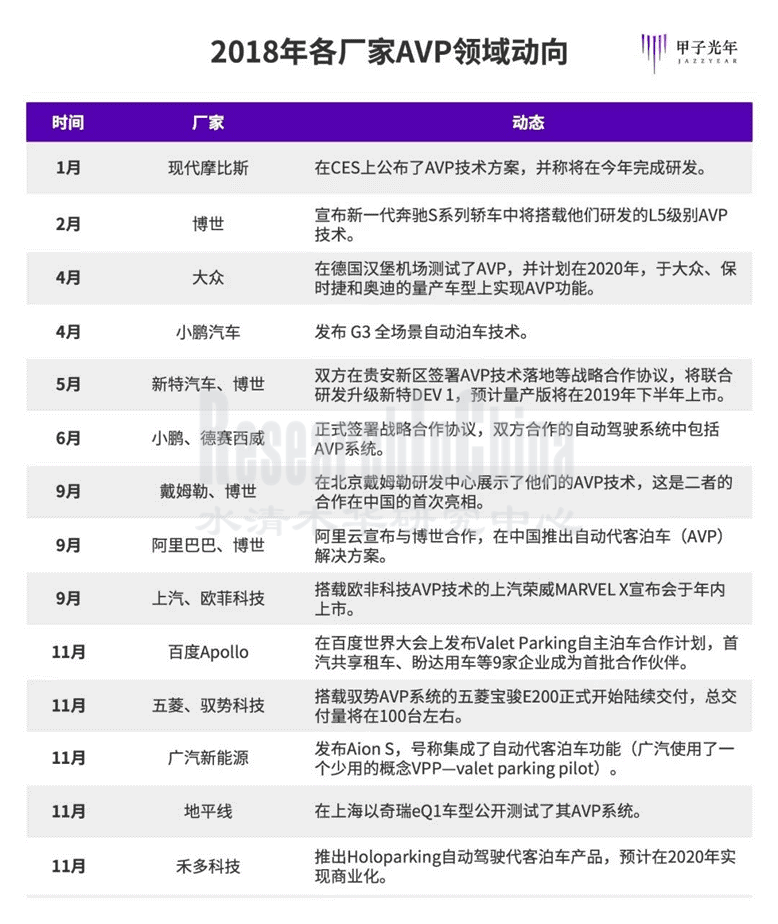
本图来源:甲子光年
Automated parking system (APS) or automated parking assistant (APA) can measure the distance and angle between vehicle body and surroundings, collect sensor data to work out operation flow whilst automatically tuning the steering wheel, brake and throttle to pull into the parking space. Automated parking system can be divided by technical grades into semi-automatic parking (automatic steering only), fully automated parking (inclusive of automatic steering and automatic forwarding & reversing), autonomous valet parking (AVP), among others.
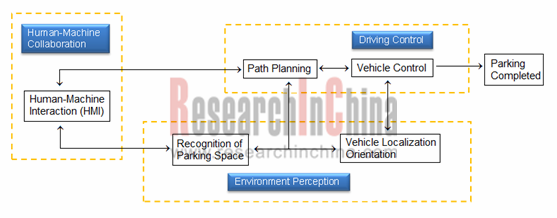
Automated parking system is generally composed of environment perception system, central control system (path planning system) and execution system (vehicle control system). Taking the diversity of automated parking systems into account, ResearchInChina recently rolled out the Global and China Automated Parking and Autonomous Parking Industry Report, 2018-2019 where all automated parking systems are classified into nine levels including APL1, APL1.5, APL2, APL2.5, APL3, APL3.5, APL4, APL5 and APL6. (See the table below)
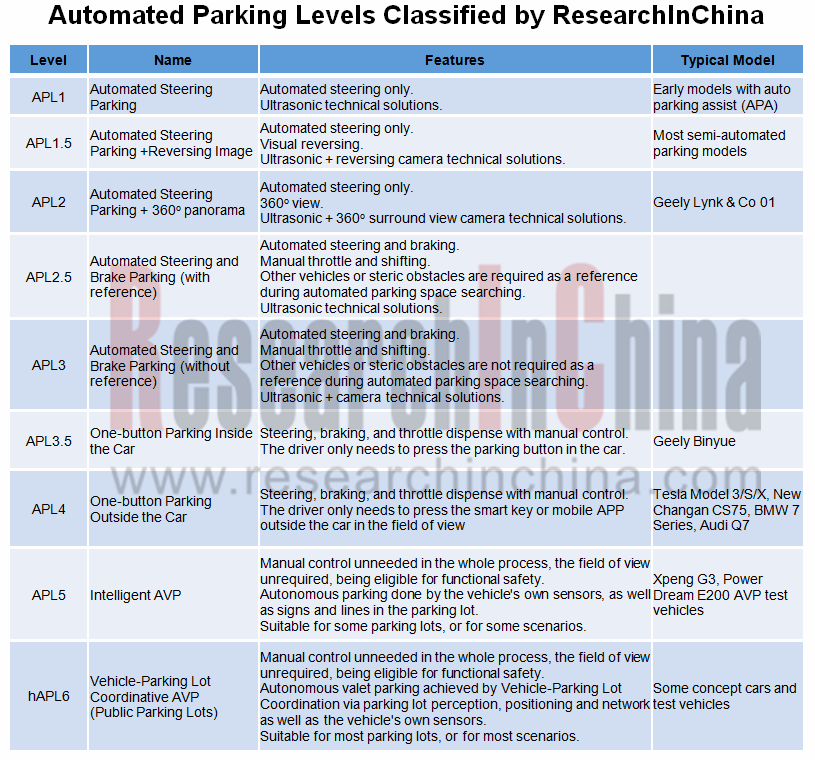
According to ResearchInChina, the APS configuration rate of passenger vehicles in Chinese market was 5.3% in 2018, a not high figure due to technical immaturity shown as follows:
In the mass-produced vehicle models with APS, the automated parking system still desires to be improved in real experience and is faced with system recognition error and the occurrence of scratches.
Most APS renders ultrasonic sensors for monitoring parking spaces, but ultrasonic sensors are vulnerable to surface stains & defects, raindrops, ice, snow, etc., and thus fail to be brought into full play.
Recognition of parking space and the process of automated parking are subject to environmental factors. The currently mass-produced APS system, for example, usually cannot recognize well lids, pits or loose kerbs, tiny objects on the parking space, among others.
The current best-selling models with APS function are primarily from foreign automakers like Benz, Buick, Volkswagen, BMW and Land Rover as well as China-made premium brands LYNK&CO, Great Wall Motor’s WEY, etc.
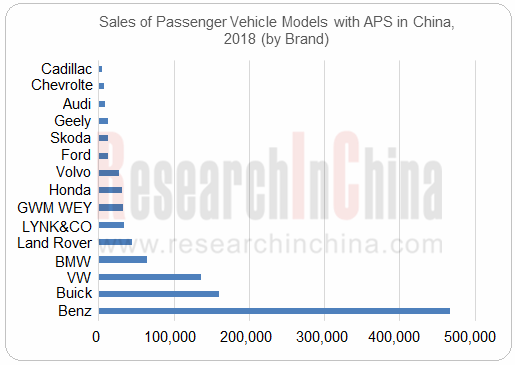
As automotive intelligence technologies and sensor technologies in particular are developing apace, OEMs are beginning to apply more sensors in the automated parking system, facilitating maturity of the APS technologies. Automated parking has already been a highlight of new car sales.
Geely SUV Binyue is one of the five most successful new cars in Chinese market in 2018. It debuted on October 31, 2018, with the sales outnumbering ten thousand units and reaching 10,100 units in the first month of launch, 13,222 units in December 2018 and 14,627 units in January 2019. Binyue is provided with fully automated parking system that enables horizontal pull-in, vertical pull-in as well as horizontal pull-out by only a key-touch whilst the driver does not have any control on steering wheel, throttle and brake. Binyue has the automated parking level APL3.5.
CS75 (the hit model of Changan Automobile) has the APA4.0 parking system which enable a man standing outside the car to realize one-key parking. Only a touch on the automated parking button is needed, the car can search the tailgate automatically, and performs operations such as forwarding, reversing and wheel steering. The entire parking process needs no driver engagement. CS75 has an automated parking level at APL4.
BAIC plans to have the majority of its vehicle models be equipped with the automated parking technologies from July 2019.
Among emerging car manufacturers, Xiaopeng Motors focuses on automatic parking. Xpeng G3 carries 20 environmental sensors including 12 ultrasonic sensors, 5 vision sensors and 3 radars. That XPENG uses numerous sensor systems to make parking spaces recognized more accurately and lift probability of success in parking is an effective solution to the problems of low parking space recognition and many unsuccessful parking cases, adding more automatic parking capabilities. Xiaopeng says that success rate of its car automatic parking system exceeds 70% compared with less than 5% in general automatic parking and Tesla’s 13%.
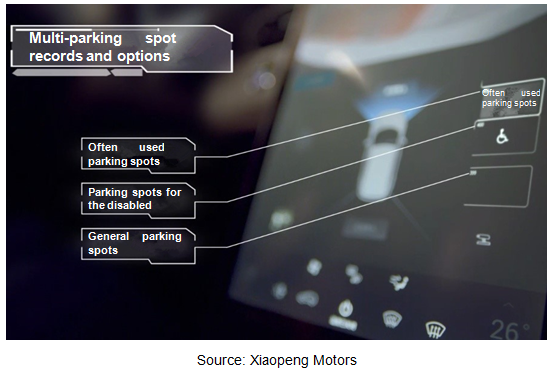
As automatic parking technology grows mature and OEMs invest more in APS, installation of such a system will soar from 2020 after years of slow increase, expectedly outstripping 20% in 2023.
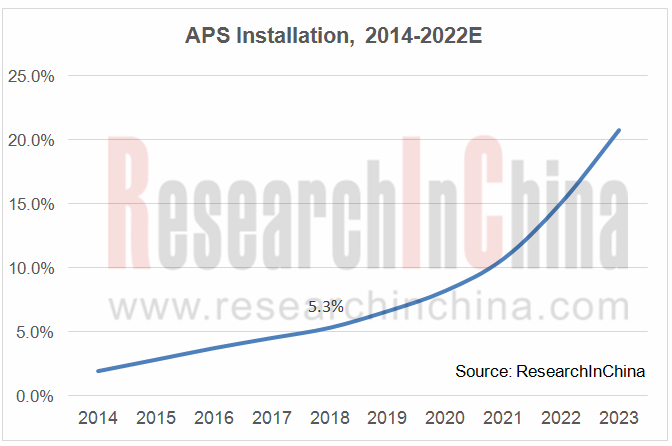
Traditional automakers follow an upgrading automated parking technology roadmap in ToC market, while Tier1 suppliers, technology firms and start-ups also have made an attempt to deploy automated valet parking (AVP) pilot projects at one go in ToB market.
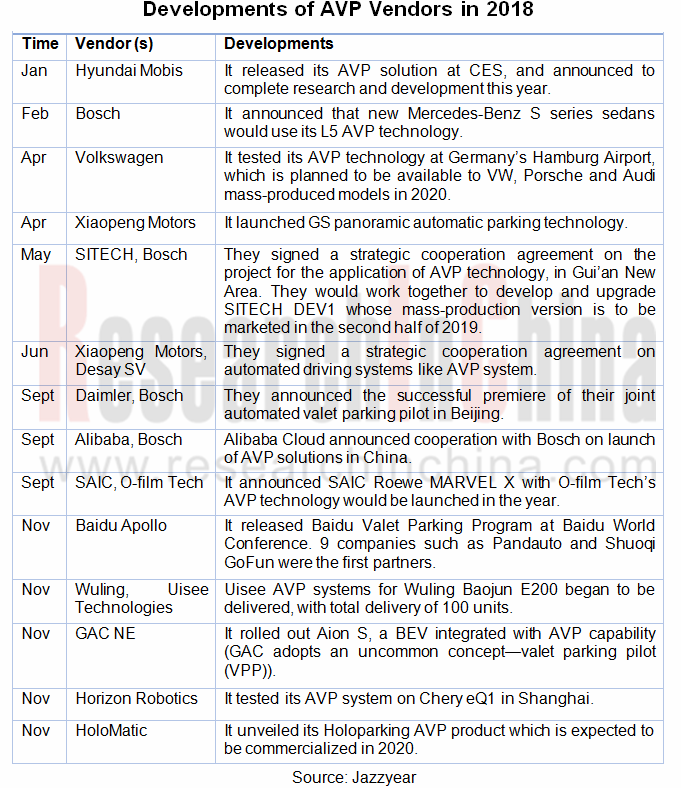
第一章 自动泊车概念和技术
1.1 自动泊车的概念和定义
1.1.1 自动泊车的概念和分类
1.1.2 自动泊车代表车型和目前存在问题
1.1.3 博世定义的自动泊车五阶段
1.1.4 佐思定义的自动泊车分级
1.2 自动泊车系统的构成和技术
1.2.1 自动泊车系统的构成
1.2.2 自动泊车系统的基本原理图
1.2.3 国外典型车型的自动泊车系统配置
1.2.4 自动泊车系统的关键技术
1.3 自动泊车系统的发展趋势
1.3.1 基本趋势
1.3.2 越来越多的企业研发AVP系统
…………………
第二章 自动泊车市场
2.1 具备APA功能的新车型占比及销售占比季度趋势(2017Q1-2018Q4)
2.2 具备APA功能的新车型分类占比及销量季度趋势(分超声波,摄像头,超声波+摄像头)
2.3 2018年具备APA功能的车型销量排名(分汽车品牌,分车型)
2.4 主要汽车品牌的APA方案及代表车型
2.5 不同价格区间的APA搭载率走势(2017Q1-2018Q4)
2.6 2018年APA功能搭载率排名(按汽车品牌,TOP30)
2.7 不同价格区间的超声波APA搭载率季度走势( 2017Q1-2018Q4 )
2.8 不同价格区间的(摄像头+超声波)APA搭载率季度走势( 2017Q1-2018Q4 )
2.9 超声波APA的超声波雷达数量季度走势( 2017Q1-2018Q4 )
2.10 2018不同APA方案的搭载率排名(分汽车品牌)
2.11 自动泊车专利申请排名
2.12 中国乘用车市场自动泊车装配率统计和预测(2014-2022)
…………………
第三章 泊车技术标准
3.1简介
3.2 范围
3.3 术语和定义
3.4 APS类型定义和通用要求
3.4.1 基本系统功能
3.4.2 APS类型
3.4.3 通用要求
3.5 APS类型1的功能和性能要求
3.5.1 基本系统功能
3.5.2 驾驶员交互和信息显示
3.5.3 最低性能要求
3.5.4 APS类型1的性能测试要求
3.6 APS类型2的功能和性能要求
3.6.1 基本系统功能
3.6.2 驾驶员交互和信息显示
3.6.3 最低性能要求
3.6.4 APS类型2的性能测试要求
附录:APS操作顺序示例
第四章 APA/AVP技术供应商研究
4.1 法雷奥
4.1.1 法雷奥泊车业务简介
4.1.2 法雷奥自动驾驶路线图
4.1.3 法雷奥Park4U®泊车产品线
4.1.4 法雷奥自动泊车技术路线图
4.1.5 Park4U自主泊车系统详解
4.1.6 Cyber Valet Services
4.2 博世
4.2.1 博世ADAS和自动驾驶产品线
4.2.2 博世自动泊车落地技术路线图
4.2.3 博世自动代客泊车项目
4.2.4 博世AVP基于”车端、场端、云端”集成
4.2.5 博世AVP场端改造
4.2.6 博世携手阿里云,推进自动代客泊车技术在华落地
4.2.7 新特汽车将引入博世自动代客泊车AVP技术
4.3 现代摩比斯
4.4 纵目科技
4.4.1 企业简介
4.4.2 两种商业模式
4.4.3 整合共享出行和自主泊车的方案
4.4.3 整合共享出行和自主泊车的方案
4.4.4 自主泊车技术方案
4.4.5 自主泊车技术路线
4.4.6 合作伙伴
4.4.7 客户
4.4.8 发布三款自主泊车配套产品
4.5 驭势科技
4.5.1 企业简介
4.5.2 产品及技术
4.5.3 驭势科技AVP方案
4.5.4 驭势自主泊车应用案例
4.6 百度AVP
4.6.1 百度AVP简介
4.6.2 百度AVP技术方案
4.6.3 百度室内停车场高精地图
4.6.4 百度AVP安全框架
4.6.5 百度自主泊车应用案例
4.7 禾多科技
4.7.1 公司简介
4.7.2 HoloParking
4.7.3 发展规划
4.8 裕兰科技
4.8.1 裕兰科技简介
4.8.2 裕兰自动&自主泊车系统
4.8.3 裕兰代客泊车系统
4.8.4 公司客户
4.9 Momenta
4.9.1 Momenta公司介绍
4.9.2 Momenta自动驾驶产品线
4.9.3 研发L4级自动泊车解决方案
4.10 易图通
4.10.1 公司简介
4.10.1 获得AVP地图量产订单
4.11 中电昆辰
4.11.1 公司简介
4.11.2 产品和技术方案
4.11.3 应用案例
4.12 辅易航
…………………
第五章 主机厂APA/AVP应用现状和趋势
5.1 大众汽车
5.1.1 大众自动泊车辅助系统简介
5.1.2 大众自动泊车辅助系统示意图
5.1.3 大众自动泊车辅助系统应用场景
5.1.4 大众自动泊车辅助系统使用限制
5.1.5 大众代表车型的自动泊车配置表
5.2 宝马汽车
5.2.1 宝马自动泊车系统简介
5.2.2 宝马自动泊车系统主要功能
5.2.3 宝马自动泊车系统的应用场景及使用限制
5.2.4 宝马代表车型的自动泊车配置表
5.2.5 宝马的智能泊车布局
5.3 戴姆勒奔驰
5.3.1 奔驰自动泊车系统简介
5.3.2 奔驰自动泊车系统主要功能
5.3.3 奔驰自动泊车系统应用场景和使用限制
5.3.4 奔驰代表车型的自动泊车配置表
5.3.5 奔驰的智能泊车布局
5.4 通用汽车
5.4.1 通用自动泊车系统简介
5.4.2 通用自动泊车系统主要功能
5.4.3 通用自动泊车系统应用场景和使用限制
5.4.4 通用代表车型的自动泊车配置表
5.5 福特汽车
5.5.1 福特自动泊车系统简介
5.5.2 福特自动泊车系统主要功能
5.5.3 福特自动泊车系统应用场景和使用限制
5.5.4 福特代表车型的自动泊车配置表
5.6 沃尔沃
5.6.1 沃尔沃自动泊车系统简介
5.6.2 沃尔沃自动泊车系统主要功能
5.6.3 沃尔沃自动泊车系统应用场景和使用限制
5.6.4 沃尔沃代表车型的自动泊车配置表
5.7 奇瑞捷豹路虎
5.7.1 捷豹路虎自动泊车系统简介
5.7.2 捷豹路虎自动泊车系统主要功能
5.7.3 捷豹路虎自动泊车系统应用场景和使用限制
5.7.4 捷豹路虎代表车型的自动泊车配置表
5.8 长安汽车
5.8.1 长安自动泊车系统简介
5.8.2 长安自动泊车系统主要功能
5.8.3 长安自动泊车系统应用场景和使用限制
5.8.4 长安代表车型的自动泊车配置表
5.8.5 长安汽车的自动泊车和出行布局
5.9 吉利汽车
5.9.1 吉利自动泊车系统简介
5.9.2 吉利自动泊车系统主要功能
5.9.3 吉利自动泊车系统应用场景和使用限制
5.9.4 吉利代表车型的自动泊车配置表
5.9.5 吉利自动泊车发展规划
5.10 上汽集团
5.10.1 上汽自动泊车系统简介
5.10.2 上汽自动泊车系统主要功能
5.10.3 上汽自动泊车系统应用场景和使用限制
5.10.4 上汽代表车型的自动泊车配置表
5.10.5 上汽自动泊车布局
5.11 长城汽车
5.11.1 长城自动泊车系统简介
5.11.2 长城自动泊车系统主要功能
5.11.3 长城自动泊车系统应用场景和使用限制
5.11.4 长城代表车型的自动泊车配置表
5.12 小鹏汽车 5.12.1 小鹏自主泊车系统简介
5.12.2 小鹏汽车车位识别和记忆
5.12.3 小鹏汽车一键泊车功能
5.13 本田汽车
5.13.1 本田自动泊车系统简介
5.13.2 本田自动泊车系统主要功能
5.13.3 本田自动泊车系统应用场景和使用限制
5.13.4 本田代表车型的自动泊车配置表
5.14 特斯拉
5.14.1 特斯拉自动泊车系统简介
5.14.2 特斯拉自动泊车系统主要功能
5.14.3 特斯拉自动泊车系统应用场景和使用限制
5.14.4 特斯拉代表车型的自动泊车配置表
…………………
1 Automated Parking Concepts and Technologies
1.1 Concepts and Definition
1.1.1 Concepts and Classification
1.1.2 Representative Vehicle Models and Existing Problems
1.1.3 Five-stage Automated Parking Defined by Bosch
1.1.4 Automated Parking Rating Defined by ResearchInChina
1.2 Composition and Technologies of Automatic Parking System
1.2.1 Composition
1.2.2 Fundamental Principles
1.2.3 Automated Parking System Configuration of Typical Foreign Vehicle Models
1.2.4 Key Technologies
1.3 Development Trends
1.3.1 General Trends
1.3.2 More and More Enterprises Develop AVP Systems
2 Automated Parking Market
2.1 Proportion and Quarterly Sales Share of New APA-enabled Vehicle Models (2017Q1-2018Q4)
2.2 Classification and Quarterly Sales Volume of New APA-enabled Vehicle Models (by Ultrasonic, Camera and Ultrasonic + Camera)
2.3 Ranking of APA-enabled Vehicle Models in 2018 by Sales Volume (by Car Brand and Vehicle Model)
2.4 APA Solutions and Representative Vehicle Models of Major Car Brands
2.5 Installation Rate of APA by Price (2017Q1-2018Q4)
2.6 Top 30 APA Ranking by Installation Rate in 2018 (by Car Brand)
2.7 Quarterly Installation Rate of Ultrasonic APA by Price (2017Q1-2018Q4)
2.8 Quarterly Installation Rate of (Camera + Ultrasonic) APA by Price (2017Q1-2018Q4)
2.9 Quarterly Ultrasonic Radar Number of Ultrasonic APA (2017Q1-2018Q4)
2.10 APA Solution Ranking by Installation Rate in 2018 (by Car Brand)
2.11 Ranking of Automated Parking Patent Filings
2.12 Installation Rate of Automated Parking in Chinese Passenger Car Market (2014-2022)
3 Parking Technology Standards
3.1 Introduction
3.2 Scope
3.3 Terminology and Definition
3.4 APS Types and General Requirements
3.4.1 Basic System Features
3.4.2 APS Types
3.4.3 General Requirements
3.5 Features and Performance Requirements of APS Type 1
3.5.1 Basic System Features
3.5.2 Driver Interaction and Information Display
3.5.3 Minimum Performance Requirements
3.5.4 Performance Test Requirements of APS Type 1
3.6 Features and Performance Requirements of APS Type 2
3.6.1 Basic System Features
3.6.2 Driver Interaction and Information Display
3.6.3 Minimum Performance Requirements
3.6.4 Performance Test Requirements of APS Type 2
4 APA/AVP Technology Providers
4.1 Valeo
4.1.1 Parking Business
4.1.2 Autonomous Driving Roadmap
4.1.3 Park4U® Parking Product Line
4.1.4 Automated Parking Technology Roadmap
4.1.5 Interpretation of Park4U Autonomous Parking System
4.1.6 Cyber Valet Services
4.2 Bosch
4.2.1 ADAS and Autonomous Driving Product Line
4.2.2 Automated Parking Technology Roadmap
4.2.3 Automated Valet Parking (AVP) Project
4.2.4 AVP Is Integrated on the Basis of "Car, Field and Cloud"
4.2.5 AVP Field Transformation
4.2.6 Bosch Joins Alibaba Cloud to Promote AVP Technology in China
4.2.7 SITECH Will Introduce Bosch's AVP Technology
4.3 Hyundai Mobis
4.4 ZongMu Technology
4.4.1 Profile
4.4.2 Two Business Models
4.4.3 Integrated Solution of Shared Mobility and Autonomous Parking
4.4.3 Integrated Solution of Shared Mobility and Autonomous Parking
4.4.4 Autonomous Parking Technology Solution
4.4.5 Autonomous Parking Technology Roadmap
4.4.6 Partners
4.4.7 Customers
4.4.8 Three Autonomous Parking Packages Are Released
4.5 UISEE
4.5.1 Profile
4.5.2 Products and Technologies
4.5.3 AVP Solution
4.5.4 Autonomous Parking Application Cases
4.6 Baidu AVP
4.6.1 Profile of AVP
4.6.2 AVP Technology Solution
4.6.3 HD Map of Indoor Parking Lot
4.6.4 AVP Security Framework
4.6.5 Autonomous Parking Application Cases
4.7 HoloMatic
4.7.1 Profile
4.7.2 HoloParking
4.7.3 Development Plan
4.8 Intesight
4.8.1 Profile
4.8.2 Automated & Autonomous Parking System
4.8.3 Valet Parking System
4.8.4 Customers
4.9 Momenta
4.9.1 Profile
4.9.2 Momenta Autonomous Driving Product Line
4.9.3 R&D of L4 Automated Parking Solution
4.10 eMapgo
4.10.1 Profile
4.10.2 Massive AVP Map Orders
4.11 Kunchen
4.11.1 Profile
4.11.2 Products and Technology Solutions
4.11.3 Application Cases
4.12 ForViSiON
5 OEM APA/AVP Application and Trends
5.1 Volkswagen
5.1.1 Profile of Automated Parking System
5.1.2 Schematic of Automated Parking System
5.1.3 Application Scenarios of Automated Parking System
5.1.4 Application Restrictions of Automated Parking System
5.1.5 Automated Parking Configuration of Representative Vehicle Models
5.2 BMW
5.2.1 Profile of Automated Parking System
5.2.2 Main Features of Automated Parking System
5.2.3 Application Scenarios and Restrictions of Automated Parking System
5.2.4 Automated Parking Configuration of Representative Vehicle Models
5.2.5 Intelligent Parking Layout
5.3 Daimler Benz
5.3.1 Profile of Automated Parking System
5.3.2 Main Features of Automated Parking System
5.3.3 Application Scenarios and Restrictions of Automated Parking System
5.3.4 Automated Parking Configuration of Representative Vehicle Models
5.3.5 Intelligent Parking Layout
5.4 General Motors
5.4.1 Profile of Automated Parking System
5.4.2 Main Features of Automated Parking System
5.4.3 Application Scenarios and Restrictions of Automated Parking System
5.4.4 Automated Parking Configuration of Representative Vehicle Models
5.5 Ford
5.5.1 Profile of Automated Parking System
5.5.2 Main Features of Automated Parking System
5.5.3 Application Scenarios and Restrictions of Automated Parking System
5.5.4 Automated Parking Configuration of Representative Vehicle Models
5.6 Volvo
5.6.1 Profile of Automated Parking System
5.6.2 Main Features of Automated Parking System
5.6.3 Application Scenarios and Restrictions of Automated Parking System
5.6.4 Automated Parking Configuration of Representative Vehicle Models
5.7 Chery Jaguar Land Rover
5.7.1 Profile of Automated Parking System
5.7.2 Main Features of Automated Parking System
5.7.3 Application Scenarios and Restrictions of Automated Parking System
5.7.4 Automated Parking Configuration of Representative Vehicle Models
5.8 Chang'an Automobile
5.8.1 Profile of Automated Parking System
5.8.2 Main Features of Automated Parking System
5.8.3 Application Scenarios and Restrictions of Automated Parking System
5.8.4 Automated Parking Configuration of Representative Vehicle Models
5.8.5 Automated Parking and Mobility Layout
5.9 Geely
5.9.1 Profile of Automated Parking System
5.9.2 Main Features of Automated Parking System
5.9.3 Application Scenarios and Restrictions of Automated Parking System
5.9.4 Automated Parking Configuration of Representative Vehicle Models
5.9.5 Automated Parking Development Plan
5.10 SAIC
5.10.1 Profile of Automated Parking System
5.10.2 Main Features of Automated Parking System
5.10.3 Application Scenarios and Restrictions of Automated Parking System
5.10.4 Automated Parking Configuration of Representative Vehicle Models
5.10.5 Automated Parking Layout
5.11 Great Wall Motors
5.11.1 Profile of Automated Parking System
5.11.2 Main Features of Automated Parking System
5.11.3 Application Scenarios and Restrictions of Automated Parking System
5.11.4 Automated Parking Configuration of Representative Vehicle Models
5.12 XPENG Motors 5.12.1 Profile of Autonomous Parking System 5.12.2 Parking Space Recognition and Memory
5.12.3 One-button Parking Function
5.13 Honda
5.13.1 Profile of Automated Parking System
5.13.2 Main Features of Automated Parking System
5.13.3 Application Scenarios and Restrictions of Automated Parking System
5.13.4 Automated Parking Configuration of Representative Vehicle Models
5.14 Tesla
5.14.1 Profile of Automated Parking System
5.14.2 Main Features of Automated Parking System
5.14.3 Application Scenarios and Restrictions of Automated Parking System
5.14.4 Automated Parking Configuration of Representative Vehicle Models